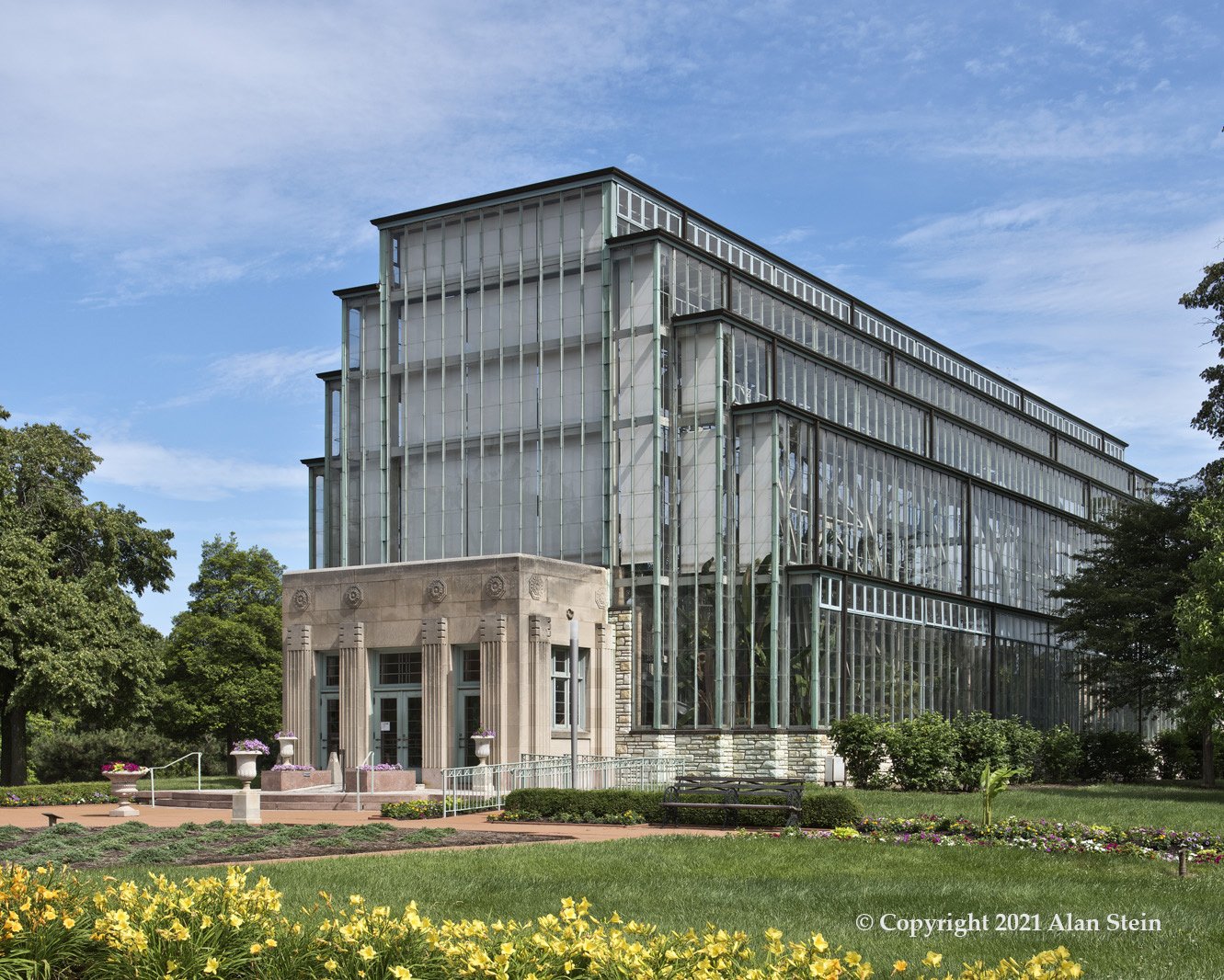
The Jewel Box Conservatory
Forest Park, Saint Louis, Missouri, 1936, Architect: William C.E. Becker
During the depths of America’s Great Depression in 1936, the art-deco-style botanical house in Saint Louis, known as the Jewel Box, was built. One of the many unique things about the Jewel Box is how it was constructed. As part of a federal New Deal program underwritten by the Works Progress Administration, the conservatory only cost $117,000 ($2.15 million in 2019 dollars) as it employed only unskilled and unemployed workers. The first glasshouse that arose in Forest Park was one of the first modernist renditions of a conservatory.
![06_Cons_ch6_002[2B]_copyright.jpg](https://images.squarespace-cdn.com/content/v1/5f11b7e4e3277041fd2580c6/c379030b-1adf-4e75-994c-ace5c8668304/06_Cons_ch6_002%5B2B%5D_copyright.jpg)
![06_Cons_ch6_003[2B]_copyright.jpg](https://images.squarespace-cdn.com/content/v1/5f11b7e4e3277041fd2580c6/aba23582-21de-4fe6-8d17-49f105814d27/06_Cons_ch6_003%5B2B%5D_copyright.jpg)
As Alan and Nancy describe the Jewel Box in their book, The Conservatory: Gardens Under Glass, “Its stepped shape is unique among conservatories and breaks with the prevailing tradition of curvilinear roof forms. Designed by the city’s chief engineer of bridges and buildings, architect William C.E. Becker, the 145-foot-long, 55-foot-high conservatory resembles an Aztec pyramid with a series of flat roofs. Light enters through clerestory windows instead of the traditional glass roof - a choice made to reduce the possibility of damage from the frequent hailstorms in the Midwest.”
Reflecting Becker’s bridge-building expertise, the walls and roofs are supported by 8 fixed arches that mimic Saint Louis’s Eads Bridge (1874), whose 525-foot central steel arch was the iconic image of the city until Eero Saarinen’s Gateway Arch was completed in 1965.
Photo Credits: Alan Stein
